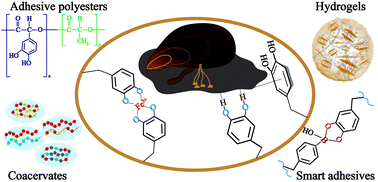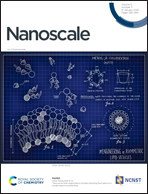Recent progress in synthesis and application of mussel-inspired adhesives
Abstract
The rapid and robust adhesion of marine mussels to diverse solid surfaces in wet environments is mediated by the secreted mussel adhesive proteins which are abundant in a catecholic amino acid, L-3,4-dihydroxyphenylalanine (Dopa). Over the last two decades, enormous efforts have been devoted to the development of synthetic mussel-inspired adhesives with water-resistant adhesion and cohesion properties by modifying polymer systems with Dopa and its analogues. In the present review, an overview of the unique features of various mussel foot proteins is provided in combination with an up-to-date understanding of catechol chemistry, which contributes to the strong interfacial binding via balancing a variety of covalent and noncovalent interactions including oxidative cross-linking, electrostatic interaction, metal–catechol coordination, hydrogen bonding, hydrophobic interactions and π–π/cation–π interactions. The recent developments of novel Dopa-containing adhesives with on-demand mechanical properties and other functionalities are then summarized under four broad categories: viscous coacervated adhesives, soft adhesive hydrogels, smart adhesives, and stiff adhesive polyesters, where their emerging applications in engineering, biological and biomedical fields are discussed. Limitations of the developed adhesives are identified and future research perspectives in this field are proposed.

- This article is part of the themed collections: Recent Review Articles and Nanoscale Most Popular 2020 Articles


 Please wait while we load your content...
Please wait while we load your content...